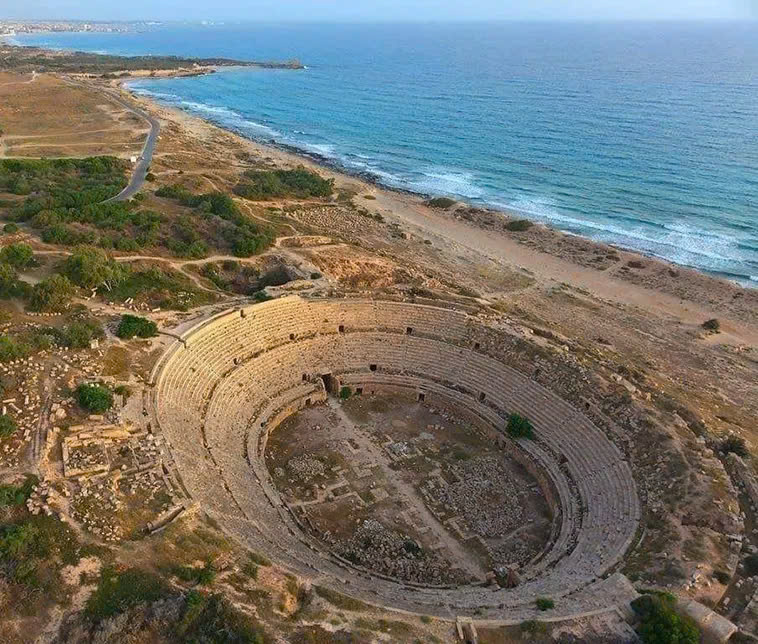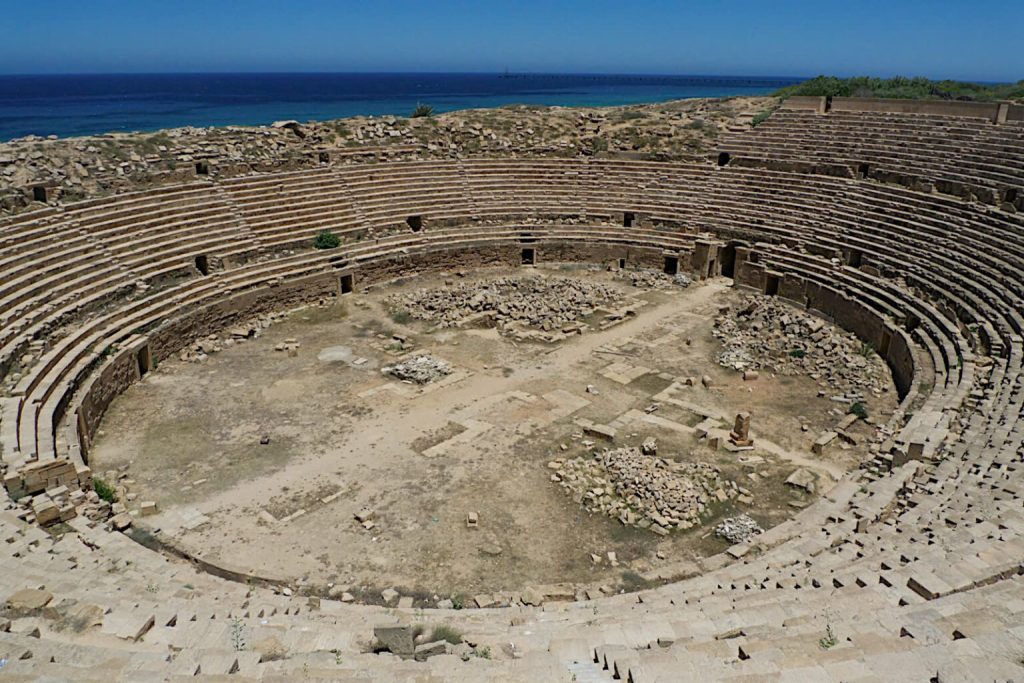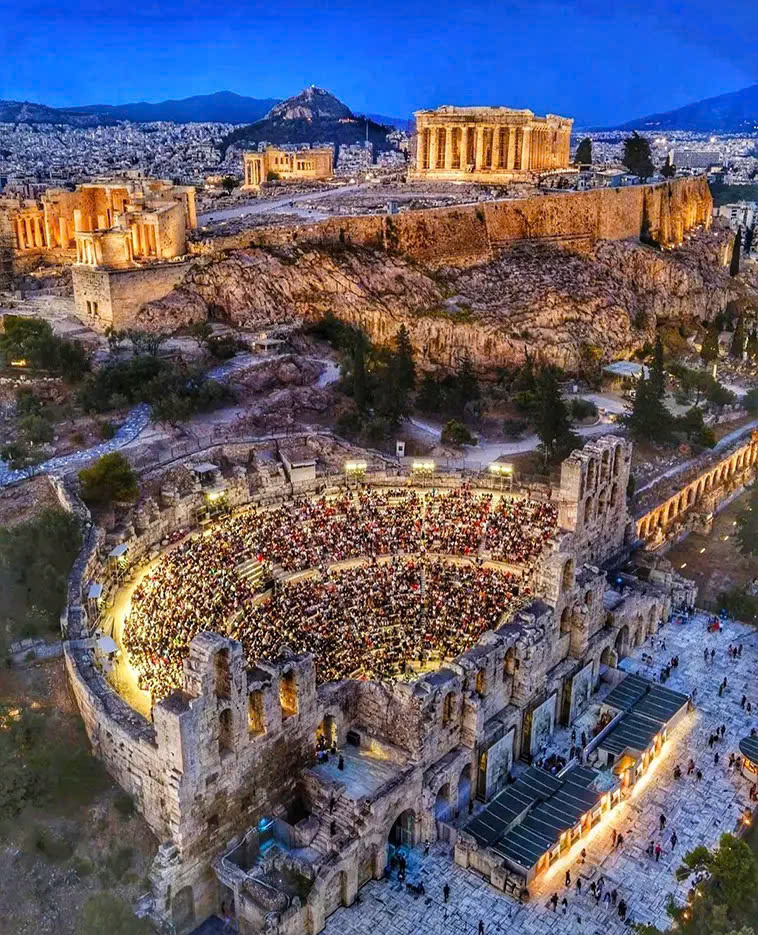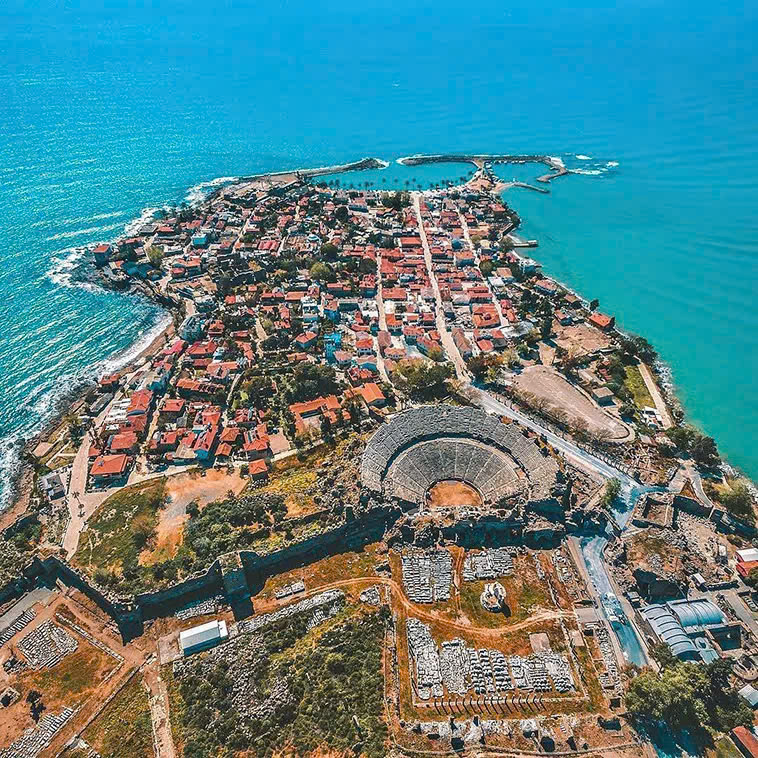In the sun-drenched lands of the Mediterranean, remarkable architectural treasures lie scattered across the sands of time. These are the ancient theaters of Greek and Roman antiquity, each bearing witness to human ingenuity and cultural expression. Today, let us embark on an enthralling journey through some of the most awe-inspiring and well-preserved theaters that have stood the test of time, serving as timeless reminders of our shared history.
Our first destination takes us to the heart of North Africa, where the Amphitheater of Leptis Magna shines as a desert jewel in modern-day Libya. This city, originally founded by the Phoenicians in the 10th century BC, later flourished under Roman rule to become one of the empire’s crown jewels. The amphitheater, constructed in 56 AD, is an extraordinary example of Roman architectural brilliance. Unlike many others, it was uniquely built below ground level, allowing it to remain remarkably preserved under layers of desert sands for centuries. With a capacity of 16,000 seats, it stands as a testament to the grandeur of Leptis Magna’s heyday.

Moving to the iconic Acropolis of Athens, the Odeon of Herodes Atticus is a masterpiece set against the backdrop of ancient Greece. This Roman theater, built with local sandstone, is as magnificent today as it was when constructed in 161 AD. Designed to hold up to 5,000 spectators, its semi-circular design and once-stunning ceiling reveal a blend of functionality and aesthetic beauty, making it a cultural beacon of the ancient world.
From Greece, we journey to Sicily, home to the Roman Amphitheater of Catania. Built in the 2nd century CE, this theater has withstood the ravages of time and nature, including 17 volcanic eruptions that buried much of the city beneath layers of lava. Today, the amphitheater’s partially excavated ruins stand as a testament to resilience, offering a glimpse into the layered history of Catania.
Next, we explore the Roman Theater of Palmyra, nestled in the Syrian desert. Constructed during the 2nd century AD, this theater is a magnificent example of Roman architectural ingenuity. Palmyra, once a vital trade hub connecting the East and West, boasts this theater as a symbol of its historical significance and cultural richness.
In Antalya, Turkey, the Aspendos Theatre claims its place as the best-preserved theater of antiquity. Built in the 2nd century AD, it is celebrated for its harmonious integration with the surrounding natural landscape. The precision of its design, from the semi-circular auditorium to the skene building, reflects the ingenuity of its architects and their commitment to blending form and function.
Also in Turkey, the Ephesus Theatre in Izmir captivates with its sheer size and grandeur. Believed to be the largest ancient theater in the world, it could accommodate up to 25,000 spectators. Dating back to the Hellenistic period, it showcases the architectural mastery and cultural significance of its time, leaving visitors in awe of its scale and intricacy.
In Sicily, the Ancient Greek Theater of Taormina offers a different perspective on ancient theater design. Constructed in the 3rd century BC, it features three distinct sections: the scene, the orchestra, and the auditorium. Its Corinthian columns and arched openings reveal the meticulous craftsmanship of ancient Greek architects, ensuring its place as a marvel of antiquity.
Meanwhile, the Side Ancient Theater in Antalya, Turkey, blends Roman construction techniques with Greek architectural elements. Built in the 2nd century AD, its semi-circular seating area and striking facade provide a stunning example of cultural fusion in ancient design.
Returning to North Africa, the Roman Theater at Sabratha is another sandstone masterpiece near Leptis Magna. Accommodating up to 5,000 spectators, its elaborate stucco decorations and sloping wooden ceiling once demonstrated the Roman mastery of both aesthetics and practicality. Today, its ruins offer a glimpse into the artistic and engineering prowess of ancient times.
Among the Greek theaters, the Ancient Theatre of Epidaurus in the Peloponnese stands out for its unparalleled acoustics and architectural harmony. Built in the late 4th century BC, its 34 rows of seats, divided into 34 sections, create a flawless balance of form and function. Widely regarded as the best-preserved ancient theater in Greece, it embodies the pinnacle of Greek engineering and artistic vision.

The Delphi Theatre, perched on a hill in central Greece, offers both entertainment and breathtaking views. Constructed in the 4th century BC, its 5,000 seats provide an unforgettable panorama of the sanctuary below and the majestic landscape beyond. This theater exemplifies the seamless integration of human artistry and natural beauty.
Crossing into Western Europe, we find the Roman Theatre of Orange in modern-day France. Built in the 1st century AD, it was once a hub of cultural performances until it was closed by a church edict in 391 AD. After centuries of neglect, it was restored in the 19th century, allowing visitors to marvel at its splendor once more. Its towering stage wall and intricately designed seating area reflect the grandeur of Roman entertainment.

In Spain, the Roman Theatre of Mérida stands as a testament to the enduring legacy of Roman architecture. Commissioned by General Agrippa in 16 BC, this 6,000-seat theater has undergone numerous restorations while preserving its classical essence. Its arches, columns, and stage area remain a striking reminder of ancient Roman culture and innovation.
Finally, our journey concludes in Turkey at the Pergamon Ancient Theater, the steepest theater in the world. Built in the 3rd century BC during the reign of King Eumenes II, it boasts a dizzying 70-degree incline. Its 10,000-seat capacity and intricate staircases showcase the ambitious vision of Hellenistic architects. With its marble royal lodge and breathtaking views, Pergamon is a fitting finale to this exploration of ancient theatrical wonders.

These remarkable theaters are more than relics of the past; they are enduring symbols of human creativity, engineering brilliance, and cultural expression. From the sands of Libya to the hills of Greece and the landscapes of Europe, each site invites us to step back in time and witness the grandeur of civilizations that shaped our world.





